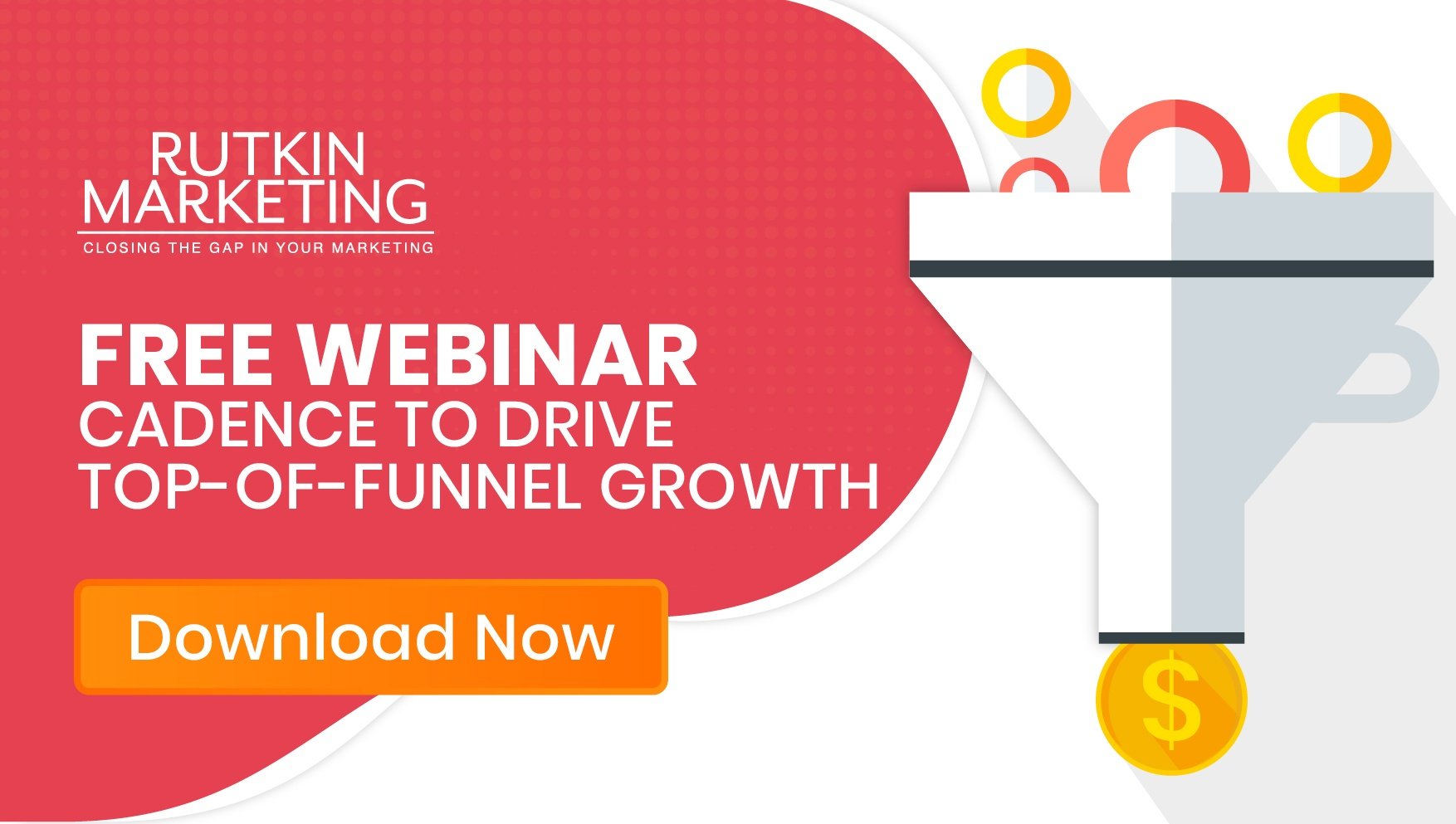How to Create Killer Webinars That Drive Leads

Webinars are a high impact B2B marketing tool to generate new leads. According to HubSpot, “Professionals say that video-based learning is their preferred learning format, and 85% prefer the video to be webinars. 94% of respondents also report viewing webinar content monthly.” If you are not implementing webinar for lead generation strategies, you are missing out on driving qualified leads.
HubSpot reports, “53% of marketers say webinars are the top-of-the-funnel format that generates the most high-quality leads.” Here we share a comprehensive step-by-step plan to implement a successful webinar that will result in high-quality leads.
1. Webinar Registration Page
The first step is to set up your webinars for lead generation on your preferred platform and create a landing page for people to register. I like to use Zoom. I find it easy to use, and people are used to the registration process already. With Zoom, the landing page is automatically created, but you can customize it with a banner image and brand colors. Make sure you edit the registration questions to gain all the information you need from registrants. If you use a platform like HubSpot, you can easily integrate Zoom into the platform to track registrants and drop them into your event drip campaigns to move them down the funnel.
2. Social Media
The next step to implementing a successful webinar is to start promoting it through social media. This is an important step because this is how you gain new customers. Existing clients may forward your email invite to their coworkers, but you can’t rely on that strategy to get new leads and email subscribers. Paid ad posts and social media promotions are the best way to go.
First, create an event on Facebook and LinkedIn with all of the webinar details. Include information on the webinar content and speakers, and a few compelling reasons why your audience would find this event relevant to their interests, along with the date and time, and a link to the registration page.
Once both events have been created, start making organic posts on social media. We recommend custom graphics in the correct dimensions for each social platform. Only include the main information on the images, and leave the rest for the landing page or caption. You want to keep the text on the image to a minimum. Feature images of the speakers, the event information, and any relevant key art to get their attention.
Keep captions short and sweet. You want to let your image grab attention, then the caption should inspire people to learn more by clicking the link. You should post in whatever cadence you have found that works best for your brand, but at minimum, we recommend posting about the event no less than one month in advance, with two posts a week as you lead up to the event.
3. Paid Social Ads
For paid promotions, we recommend a two-part approach. First, boost the event on Facebook and LinkedIn and optimize for event responses. We recommend starting with a budget of $25 to $50 per day for 7 to 10 days. The best tool you have is the power of influence. When someone RSVPs to an event, their network sees the notification and will be intrigued to check it out themselves.
Next, we recommend running a traffic ad using the same social media creative that was created for organic social posts. Optimize the ad for link clicks. These ads rely heavily on imagery, so make sure the graphics are compelling and informational. They should get the point across without any additional text needed.
Check on your ads frequently throughout the campaign. If you are tight on budget and you notice that one ad is underperforming, pause the weaker one and funnel the rest of that budget into your stronger ad.
4. Pre-Webinar Emails
Create a webinar event cadence to send emails to your existing leads, subscribers, and customers to invite them to your webinar. I like to send at least one weekly email starting two to three weeks before the event. Most registrations happen the week before the event, but early promotions are great way to get the word out.
A best practice I learned from Jay Schwedelson, President and CEO of Worldata and Founder of SubjectLine.com, is to send the same email in the morning and late afternoon. You’ll be reaching two different audiences – those who check emails in the morning and those who check in the afternoon. The clients I’ve implemented this strategy with have seen more registrations than before I started applying this tactic.
I suppress the people who have already registered for the webinar, so they don’t get emails inviting them to register anymore. I also send all registrants a reminder email three days and one day before the event through Zoom. Most people should already have the event saved in their calendar from when they registered, but these email reminders are a good way to improve your show rate.
5. Host the Webinar
It’s time for your webinar! Make sure you, your team, and any guests are ready by using the practice session feature of Zoom Webinars 15-20 minutes before the start of the webinar. You can finalize details such as moderating the presentation flow, hand-offs, managing the Q&A and chats, offers, etc.
If you can, always record the webinar. You can then send it to both the attendees and those who registered but could not make your live webinar. We’ll touch on this more in a minute.
I also recommend that you leave 5-10 minutes at the end of the webinar to answer questions that came in during the presentation. Some presenters prefer to answer questions as they go, but the presentation flows better when questions are saved until the end.
Your webinar should always have an offer at the end. The offer depends on your business and industry, but here are a few ideas:
- Connect with us on social media
- Promote upcoming webinars for lead generation
- Download a freebie
- Contact us
- Schedule a call
- Discounts on products or services
6. Post-Webinar Activities
There are a few post-webinar activities I recommend doing to make the most out of your webinars for lead generation.
Landing Page with a Form to Access the Recording and Slide Deck
This landing page isn’t hosted through Zoom. You’re responsible for setting it up as a permanent page on your website. I recommend gating the content by using a form. That way, people need to submit their email (and therefore, subscribe to your email list) before viewing the recording and/or slide deck.
Follow-Up Email Sequence with Offers
Always create a post-webinar sequence sending follow-up emails to those who attended and those who didn’t attend. The email to attendees should thank them for attending and remind them of the webinar offer you mentioned during the presentation and contain a link to access the slide deck and recording. I usually give the recording away for free to attendees – meaning I don’t require them to submit their email again on the landing page. I also invite attendees to pre-register for the next webinar I have scheduled. Next, I include the special offer for webinar attendees with a deadline date to create a sense of urgency to sign up or make a purchase.
The follow-up to non-attendees should say something along the lines of, “Sorry we missed you. We hope to see you at our next webinar.” If you’re able, give them the registration details for your next webinar. In this email, you can also include the landing page with the recording. I don’t send the slide deck to non-attendees unless they explicitly ask for it after viewing the webinar recording. I also include the special offer for webinar attendees.
Final Thoughts
Webinars for lead generation are my favorite way to get high-quality leads for my clients. They might be more work than other lead generation strategies, but I find they are highly effective and worth the effort. If you follow these steps, I know you’ll have a successful webinar strategy that will bring in high-quality leads for your business, too.
How to Drive More Qualified Sales Leads?
Rutkin Marketing is a HubSpot Solutions Partner and specializes in helping businesses of all sizes hone in on their marketing strategy, create lead funnels, finetune their messaging, and grow their sales initiatives to drive revenue. The professional team at Rutkin Marketing can help you identify a strong selling and marketing strategy along with an execution plan and KPIs to measure your success in the platform you choose to use.
Let’s Connect to Discuss Your Goals – Get a Free Marketing Assessment!

